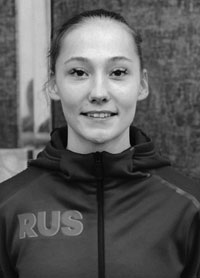COMPETITIVE/ TECHNICAL PROGRESS FORECASTING IN SKI JUMPING SPORT
Ключевые слова:
ski jumping sport, hill size line, standard hill, large hill, jump distance.Аннотация
Objective of the study was to analyze the key training elements critical for competitive/ technical progress in modern ski jumping sport.
Methods and structure of the study. We analyzed for the study purposes statistics of the 2017-2018/ 2018-2019/ 2019-2020 World Ski Jumping Cup Women’s events to find, using the Spearman's rank correlation test, correlations between the style score (competitive/ technical result) and distance score within the landing zone or construction point (K-point) on the hill size line.
Results and conclusion. The national ski jumping training service should give a higher priority to quality and safety of the landing techniques and styles within and behind the K-point on the hill size line. Our study found a strong direct statistical correlation (r=0.78) between the competitive style score and distance score within and behind the K-point on the hill size. The national ski jumping team leaders need to achieve and stabilize the 90% and 95% hill size jumps to enter the top-10 and top-3 (respectively) in the World Cup standard hill events. In the Large Hill World Cup events, the top-3 and top-10 distance score averages should vary at around 95% and 92% the hill size, respectively. The high-distance landings are particularly demanding to the individual musculoskeletal system fitness, and athletes should be well trained for such large hill jumps with a special focus on the high in-run speeds.
Библиографические ссылки
Arefyev A.N., Zubkov S.A. Metodicheskie razrabotki po tekhnike i metodike pryzhkov na lyzhakh s tramplina [Methodological developments in the technique and methodology of ski jumping]. Methodological guide for coaches. M.: Fizkultura i sport publ.. 2012. 112 p.
Bozheninov O.M. Faktory, vliyayushchie na rezultat v pryzhkakh s tramplina na lyzhakh i evolyutsiyu tekhniki poleta [Factors affecting result in ski jumping on skis and evolution of flight technique]. Teoriya i praktika fiz. kultury. 1995. No. 1. pp. 23–40.
Zebzeev V.V., Zdanovich O.S., Zebzeev V.V. Biomekhanicheskie i aerodinamicheskie osobennosti tekhniki pryzhka s tramplina v fazakh ottalkivaniya i poleta [Biomechanical and aerodynamic features of ski jumping technique in take-off and flying phases]. Nauka i sport: sovremennye tendentsii. 2016. V. 10. No. 1 (10). pp. 42–48.
Lavrov V.N. Fiksirovanie oshibok v tekhnike pryzhkov na lyzhakh s tramplina [Fixing errors in ski jumping technique]. Lyzhny sport. 2008. no. 2.
Shestoperov R.Y., Gorbunov S.A., Gorbunov S.S. Osobennosti struktury oshibok v pryzhkakh na lyzhakh s tramplina [Technical errors in elite ski jumping: classification attempt]. Teoriya i praktika fiz. kultury. 2021. No. 9. pp. 23–25.

Опубликован
Как цитировать
Выпуск
Раздел
Лицензия

Это произведение доступно по лицензии Creative Commons «Attribution» («Атрибуция») 4.0 Всемирная.
